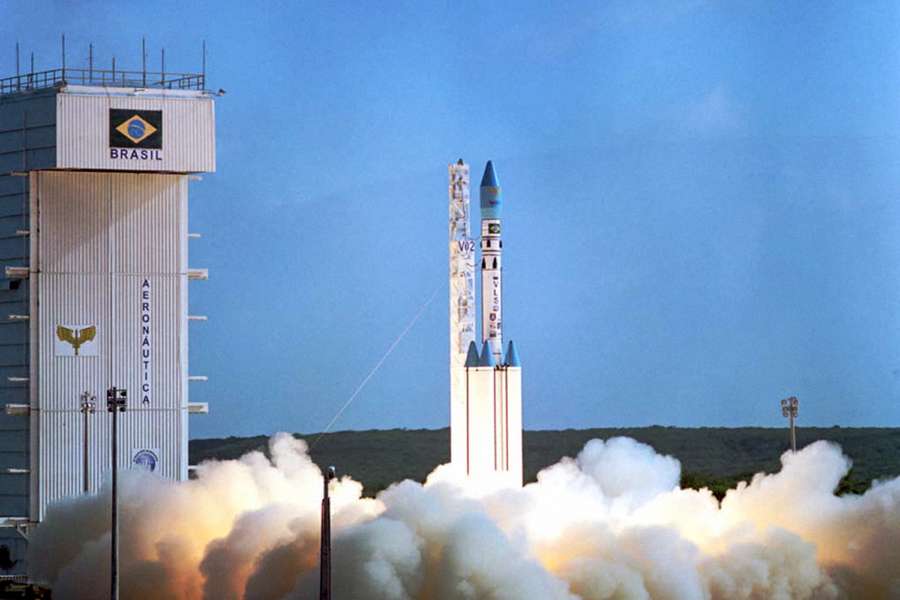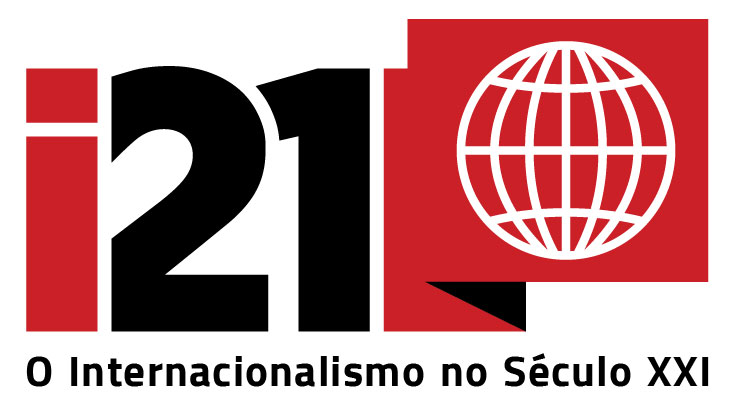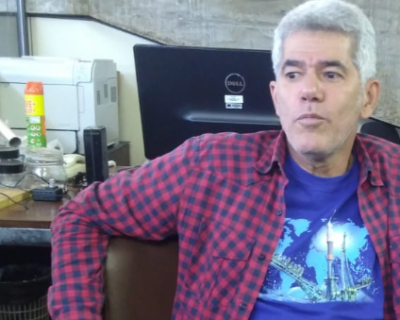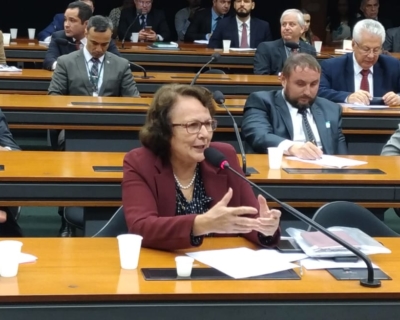Alcantara: the long march to a base

China, the Soviet Union, Russia, Ukraine and Argentine. These are some of the countries that had established talks with Brazil with the aim of using the launch base in Alcantara, in the Federal State of Maranhão.
Brazilian President Jair Bolsonaro took advantage of this long process to establish, with the North-American President Donald Trump, the Agreement of Technological Safeguards (ATS), which reopened a debate lasting almost 20 years in Brazil’s Congress.
The matter is the use of the best place in the world for rocket launching: it is only 2 degrees south of the Equator line, where the Earth’s rotation speed is higher, resulting in a 30% reduction in fuel consumption to launch cargo into space in comparison with a launch made from Florida, for instance, where the best US base is located, and enabling the transportation of an additional 30% in weight. Even with this advantage, the limited technology hinders Brazil’s use of the place.
As explained in a Deutche Welle story in 1983, when the Alcântara Launch Center (ALC) was established, there was hope that the Satellite Launch Vehicle would include Brazil in a billionaire market, one in substantial expansion. However, three failed launch attempts in 1997, 1999 and 2003 have weakened the program. The latest accident saw 21 technicians and engineers die.
Lacking development in the Brazilian aerospace industry, the report states, the space base was conditioned by partnerships with countries that have a more developed sector. The first step in that direction was taken in 2000, when then President Fernando Henrique Cardoso (FHC) signed the first ATS with the United States. Deutche Welle reports that it was not an agreement for transferring technology, but one of protection of technological property with the US space artifacts.
The United States have a wide dominion in the global aerospace market, with an 80% participation, according to the report. Through the agreement with FHC, US equipment, or those with components developed in the country, would be authorized for launch from Alcântara. The main return for the use of the base would be in the form of royalties to Brazil. In any case, given the size of the market share controlled by the United States, without an agreement with that country, the base’s use is quite limited.
World market
The proposal was shelved by the Legislative and only resurfaced in 2013, in President Dilma Rousseff’s Government; it was again shelved due to the scandal of the US National Security Agency’s (NSA) espionage of the President’s communication and of PETROBRAS. After the 2016 coup d’état of impeachment, with José Serra reaching the Ministry of Foreign Affairs, the subject was recovered. Before the coup, talks with Ukraine were promoted, since the country has a sound technological expertise inherited from the Soviet period. Crisis in that country with Russia prevented the negotiations’ progress.
Deutche Welle’s story informs that in 2017, then Minister of Defense in Michel Temer’s Government, Raul Jungmann, withdrew the draft from the National Congress’ agenda and relaunched negotiations with the United States. The text resulting from this process laid the bases for the agreement signed by Trump and Bolsonaro in March this year and for the current project discussed in Congress, with important amendments in polemic parts of the previous agreement.
For instance, a point removed was the one preventing the destination of the royalties paid by the United States to the Brazilian space program, but those royalties still cannot be used in the development of missiles. Deutche Welle’s story also informs that, differently from the previous agreement, which limited the access of Brazilians to the facility, creating an extraterritoriality that harmed national sovereignty, the current one specifies that Alcantara is a base of the Brazilian Air Force. But there are stages in which only technicians from the United States will have access, as in other, similar agreements, for instance the one held by the North-Americans and Russia.
In any case, this agreement is better than the previous one for the future of the Brazilian aerospace industry, in a world market of about USD 300 billions per year, of which USD 5 billions are related to launches. Resources collected from Brazil’s participation in that run would boost the space industry in Alcântara, especially with the construction of a technology hub in its surroundings, such as the one in São José dos Campos (in the Federal State of São Paulo) for the aeronautics industry, where Embraer[1] is located.
The devil in the details
Carlos Moura, the President of the Brazilian Space Agency (AEB), which is linked to the Ministry of Science, Technology and Innovation, told Deutche Welle that the agreement is only a first step in the establishment of commercial partnerships and other initiatives to develop the Brazilian aerospace industry. He emphasizes that the text does not demand exclusivity for the United States. “If we do not enter this agreement, we will be limiting ourselves to only 20% of the world aerospace market. Therefore, we want to have a market as open as possible to develop Alcântara’s capabilities”, he says.
AEB’s President also points out that the agreement is necessary so the base can continue running. “Technically, the Alcantara Center will become more functional. For a base to function, it must have various technological systems running, in areas such as data treatment, telemetry, radars, and systems of meteorology and flight safety”, he states.
Diplomat Marcos Azambuja, former Secretary General of Itamaraty[2] and current advisor to the Brazilian Center of International Relations (CEBRI), also sees advantages in the agreement. “There is no use in having a great geography and not having launching technology. Alcântara is stupendous, provided that it launches rockets. Therefore, we need the US technology. But this is an agreement that requires political and diplomatic carefulness and scientific accuracy. After all, in diplomacy, the devil is in the details”, he told Deutche Welle.
An example of what the diplomat is drawing attention can be the agreement’s so-called interpretive clauses. If approved, according to Deutche Welle, the text would prevent Brazil from authorizing the use of Alcântara by countries under UN sanction or which have not joined the Missile Technology Control Regime. This second group includes China, the country which invests the most in Brazil and which is the main competitor against the United States in commercial and technological disputes.
Quilombola families
Another important issue addressed in the report is the situation of over 800 quilombola families[3] living around the base, who might be affected by the project. These are people that have already been removed from their original places when the base was built, in 1983. “We do not oppose the agreement or technological progress. What we cannot accept is further displacement of families and the area’s enlargement. If the agreement is silent about not having more expansion, why is the government lacking the courage to officially recognize those communities?”, asked Antônio Marcos Diniz, a leader of the Quilombola Community Mamuna de Alcântara, in a hearing in the Human Rights and Minorities Commission in the House of Representatives, held in July.
According to Maranhão’s newspaper O Imparcial, data from the National Industry Confederation (CNI) stress on the agreement’s strategic importance. In 2017 alone, the sector moved USD 3 billion worldwide, an additional USD 500 million when compared to the previous year, according to information from the US Federal Aviation Administration, compiled by the CNI. There are estimates according which 42 commercial satellite launches will be made every year until 2026, which makes the ATS between Brazil and the United States positive, especially given the potential to attract and generate businesses around the Alcântara Launch Center (CLA).
Local industry would be given a huge push, according to CLA’s Director, Colonel Marco Antônio Carnevale Coelho. “The project that we plan for Alcântara has the same characteristics of the one implemented in São José dos Campos, which is coordinated by the industry, the academic community and the Government, aiming for one goal. The Maranhão State’s Federation of Industries (FIEMA) and its representatives form a pillar without which the project cannot take impulse”, he said.
Long march
The technological matter is an essential point in talks with other countries. Ukraine is an example of that. The country, which signed the first agreement for the commercial use of the Alcântara base in 2001, inherited many aerospace facilities from the Soviet Union. Brazil, for its part, sought to recover space, after having faced serious difficulties to master the cycle of rocket fuel during the dictatorship, a time of Cold War and alignment with the United States, a country that adopts strict policies of market reservation in space technology, the great frontier for the countries’ development.
A while earlier, in 1997, Brazil and Russia signed an agreement that would enable the joint launch of satellites and the use of the Alcantara base by the Russians. The space corporation Roscosmos and the Brazilian Space Agency reignited talks about the possibility of Russian participation in the development of the CLA in 2018. A similar agreement was signed in 1996 with Argentine and, in 1994, with China. In the Alcântara base’s initial phase, in 1991, there were talks with the Soviet Union.
With China, cooperation started in 1988, with the establishment of the agreement for the joint construction of two professional satellites of remote sensing for the identification of earth resources. At that time, it was decided, as a pioneering initiative, for the cooperation between
[1] A transnational Brazilian company that builds commercial, military and executive airplanes, aeronautics parts, providing services and technical support, and so on. NT.
[2] Brazil’s Ministry of Foreign Affairs. NT.
[3] Quilombolas are the residents of quilombo remnant communities. Quilombos were communities formed during colonial Brazil by enslaved people brought from Africa, or Afro-Brazilians, who fled captivity and resisted enslavement. NT.





